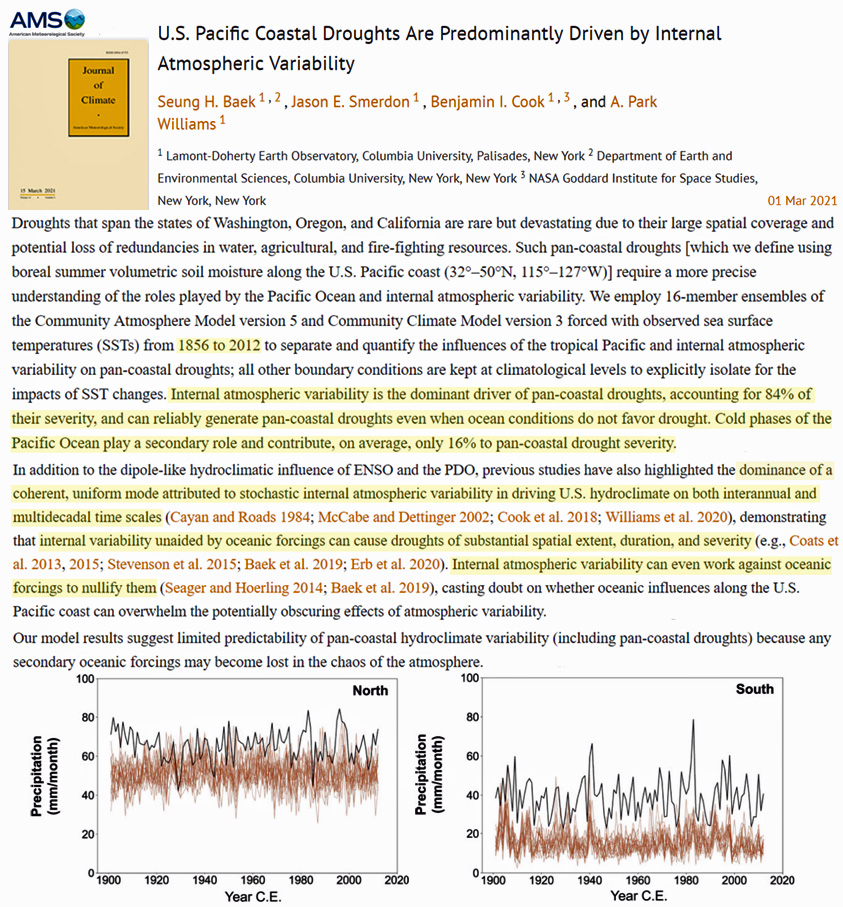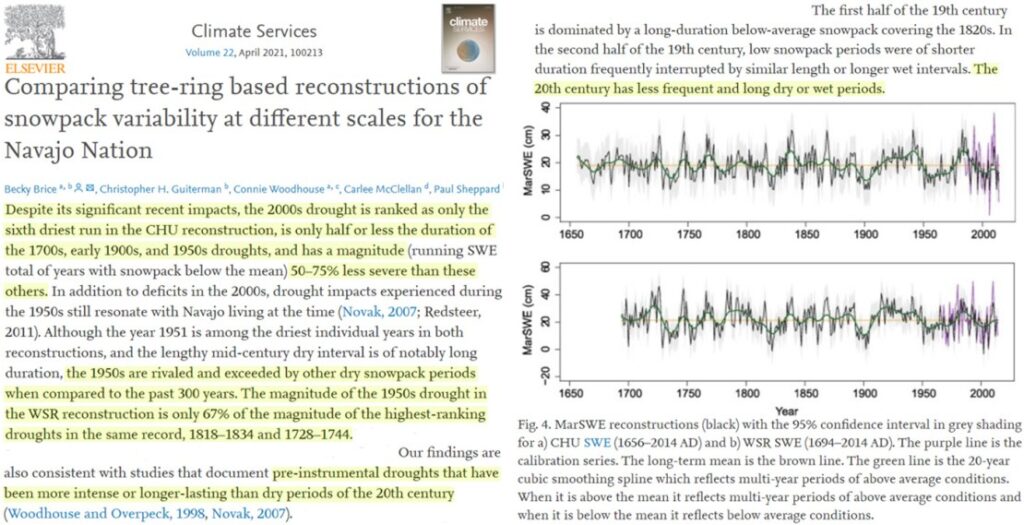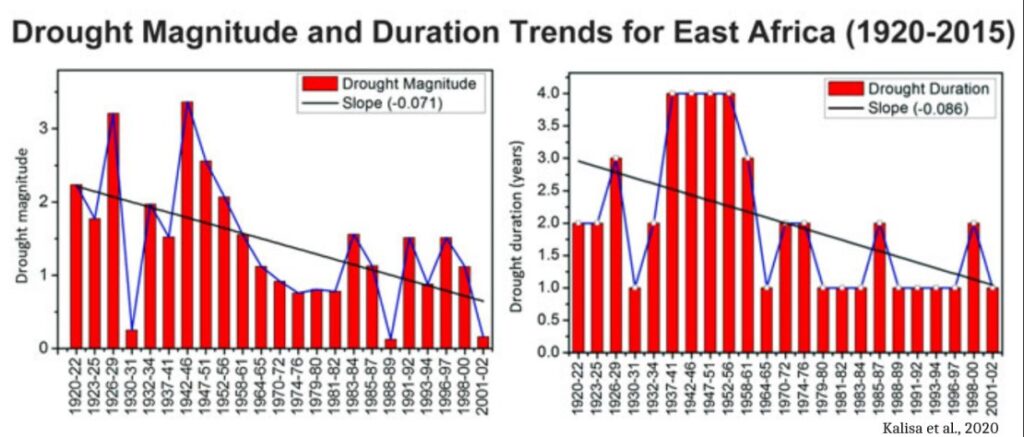By Kenneth Richard on 14. June 2021
Scientists continue to publish new drought reconstructions indicating there were far more frequent and severe drought periods in the past several thousand years than anything observed in the modern period.
A new study (Berg and McColl, 2021) indicates there has long been “qualitatively incorrect” estimates of the impact modern and future warming has on drought trends and dryland expansion because atmospheric aridity is “not an accurate proxy of the future extent of drylands.” Consequently, the authors suggest there will be “no global drylands expansion under greenhouse warming, contrary to previous claims based on atmospheric aridity.”
Indeed, instead of being driven by increasing greenhouse gas concentrations and warming, droughts along the western coast of the United States are “predominantly [84%] driven by internal atmospheric variability” and cooling sea surface temperatures (Baek et al., 2021).

Image Source: Baek et al., 2021
Many new drought reconstructions even indicate the modern period has recorded no increasing drought trends relative to the last few thousand years.
“The periods 1931-1938 and 1909-1917 were the longest and most severe wet and dry periods.”

Image Source: Zhu et al., 2021
“Despite its significant recent impacts, the 2000s drought is ranked as only the sixth driest run in the CHU reconstruction, is only half or less the duration of the 1700s, early 1900s, and 1950s droughts, and has a magnitude (running SWE total of years with snowpack below the mean) 50–75% less severe than these others.”
“The magnitude of the 1950s drought in the WSR reconstruction is only 67% of the magnitude of the highest-ranking droughts in the same record, 1818–1834 and 1728–1744.”
“The 20th century has less frequent and long dry or wet periods. … Our findings are also consistent with studies that document pre-instrumental droughts that have been more intense or longer-lasting than dry periods of the 20th century (Woodhouse and Overpeck, 1998, Novak, 2007).”

Image Source: Brice et al., 2021
“For the final reconstruction, the instrumental target data are adjusted to provide realistic estimates of high-elevation summer rainfall back to 729 CE. The reconstruction contains substantially more low-frequency variability than other high-resolution hydroclimate records from the eastern Mediterranean including extended dry periods from 1,350 to 1,379 CE (39 ± 4.5 mm) and 913 to 942 (40 ± 8.4 mm), and moist periods from 862 to 891 (86 ± 11 mm) and 1,522 to 1,551 (80 ± 3.5 mm), relative to the long-term mean of 61 mm. The most recent 30-year period from 1986 to 2015 is characterized by above average June–July precipitation (73 ± 2 mm).”

Image Source: Esper et al., 2021
“1774 (SPEI -3.11) and 1787 (SPEI +2.13) being the driest and the wettest years, respectively.”
“The five year mean of reconstructed SPEI revealed droughts in 1818–1822, 1798–1802, 1813–1817, 1793–1797, 1958–1962.”

Image Source: Yadava et al., 2021
“Results showed that years with high drought magnitude ranged from 1920−22, 1926−29, 1942−46 and 1947−51 with values corresponding to 2.2, 3.2, 3.4 and 2.6, respectively while years with low drought magnitude ranged from 1930−31, 1988−89 and 2001−02 with values as 0.2, 0.12 and 0.15, respectively.”
“The longest droughts occurred from 1926−29, 1937−41, 1942−46, 1947−51, 1952−56, and 1958−61 with values in years as 3, 4, 4, 4, 4, and 3 years, respectively, while the shortest droughts occurred in time period of 1 year and ranged from 1930−31, 1964−65, 1979−80, 1981−82, 1983−84, 1988−89, 1991−92, 1993−94, 1996−97 and 2001−02.”

Image Source: Kalisa et al., 2020
